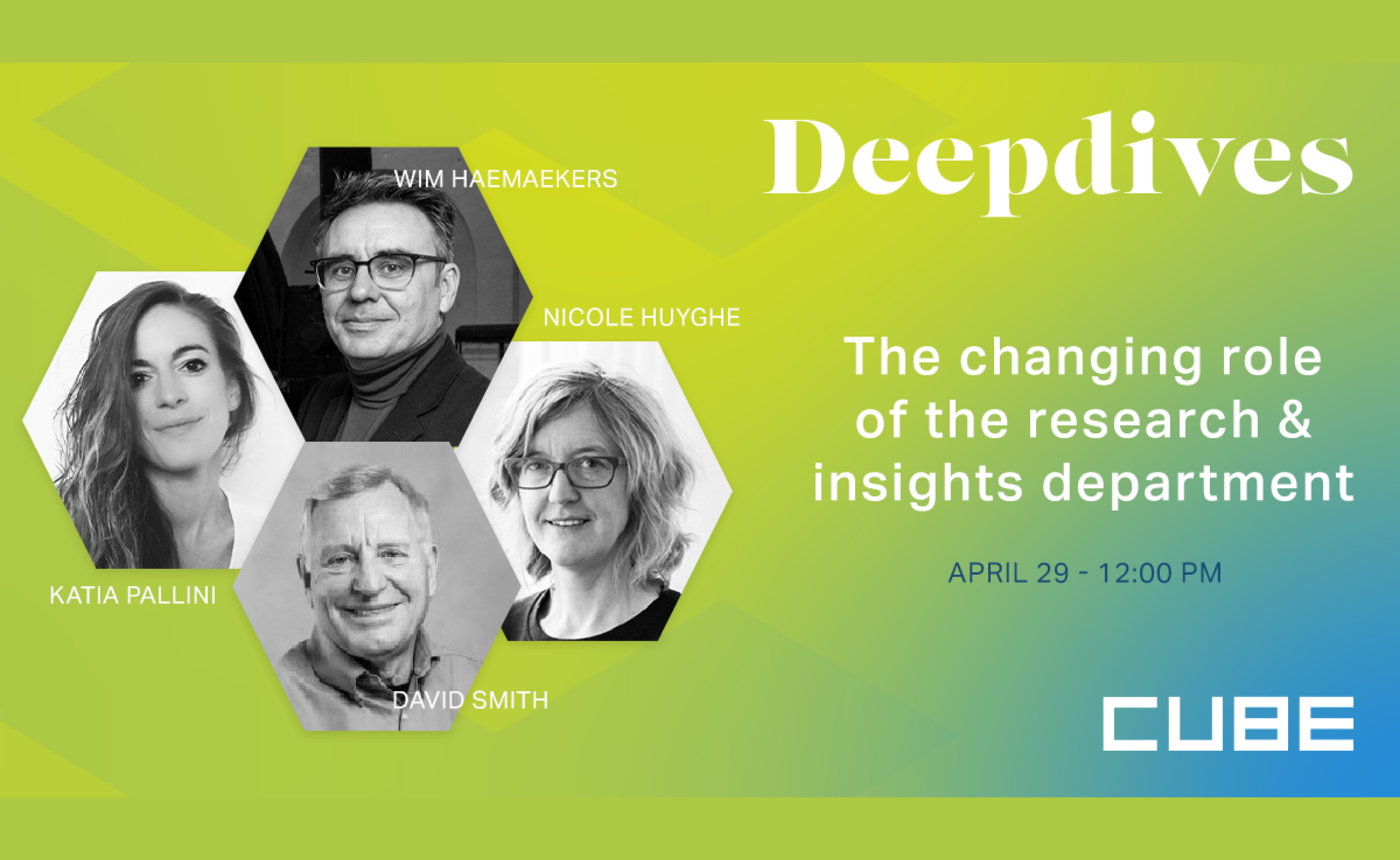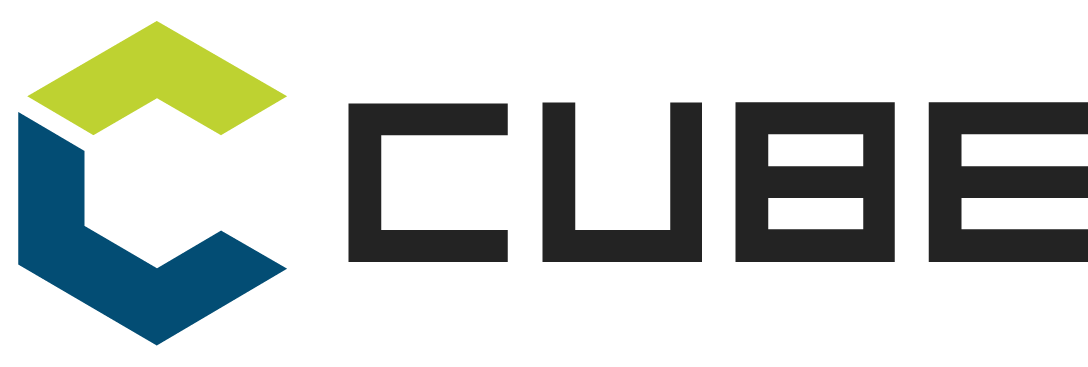
08 Jun What is the research agencies’ rightful place in the ongoing search for consumer insights?
The way businesses are conducting market research and gathering customer insights has been seriously disrupted by the COVID-19 situation. How are research agencies supposed to deal with the currently prevailing DIY-mentality? And how are businesses managing the notion of ‘customer centricity’? Wim Hamaekers, Nicole Huyghe and David Smith attempted to answer these questions in CUBE’s second ‘Deep Dive’-webinar, which was moderated by Nathan Axford.

Just how thoroughly the world of research has been shaken up was poignantly described by Wim Hamaekers from One Inch Whale. While the need for in-depth consumer insights has never been greater, the industry as a whole has seen its revenues decline by at least 25 percent in 2020. At the same time, disruption is tearing through the industry like lightning, accelerating ten times faster than just a couple of years ago, thanks to technology that captures data without ever having to canvass a consumer. While consumer surveys (on- or offline) used to be the norm, starting from 2019 technology has now become the main source of consumer data: think data analytics, media analytics, mobile qualitative research and suchlike. And in the course of 2020, their use has increased even further.
All actors now have to bend over backwards to keep up with the present fast-moving client innovation. Ever more impact has to be created in ever shorter in progressively less time. Adaptability, or as marketeers tend to designate it: “agility”, has become a primordial quality. No wonder then that DIY-platforms (the BUFFL’s and SurveyMonkeys of this world) are enjoying a sharp increase in popularity. The negative connotation associated with them has disappeared like snow before the sun and they have become surprisingly simple and user friendly.
Tensions
This has been causing some friction between customers and agencies, says Hamaekers. “Many customers feel that research agencies are not generating a sufficient amount of added value. This will force agencies to make hard choices. So many tools and methodologies have become available lately that it has become simply impossible to master them all. Which is leading to increased demand for specialised experts – a demand that will have repercussions for their recruitment policy.”
Nicole Huyghe from BooBook shared the results of a survey of ten business leaders who were asked to comment on customer centricity trends. One conclusion was that they regard customer centricity as very important, yet acknowledge that there’s still room for improvement within their own businesses. ““An A for ambition, but a C for implementation”, as one of the interviewees put it. It is also striking that corona has not really made that much of a difference in terms of their attention to customer centricity,” Huyghe said. “We discern three categories of businesses: the ones that upped their sales, those that saw their sales decrease and those to whom digitalisation has become a major concern. For the first category, the main challenge is how to retain customers. For the second category the big question is what the world will be like tomorrow. That is far from clear today. And the third category needs to act fast and get their digitalisation up to speed.”
Another hot topic turns out to be the importance of data. Businesses acknowledge that they need more and more insights and that insights are no longer the exclusive field of dedicated teams, but involve and benefit all departments. This brings with it its own set of challenges: how do we ensure that consumer research gets done efficiently, by deploying solid expertise and extracting the correct interpretations? At the same time, businesses indicate that budgets are restricted. This entails that they will wish to squeeze out any data they have to the max and feel the need to get creative with free Google-reports.
The use of internal transactional data has achieved its definitive breakthrough. The smartest pupils in class are now using an extensive combination of research and data of this type, says Huyghe. To which, as Hamaekers also indicated, the contribution of technology cannot be overstated. Only the use of artificial intelligence and machine learning has not really become a great success yet, not even in large enterprises. In closing, Huyghe revealed three key words to describe businesses that truly intend to reap the benefits from consumer insights to the fullest: they “invest”, “move fast” and they are “ready to transform”. Combine this trio of characteristics and the world is your oyster.
Decent position
David Smith (the industry veteran now heading DVL Smith) pointed out that, on the whole, consumer research is in a pretty good place at the moment. The shift from risk reduction to helping management teams grasp business opportunities has been finalised and professionals in the field are entrusted with an ever growing load of responsibilities. Which means they have to keep changing gear swiftly – and their budgets are feeling the strain.
The progressing democratisation of this technology also means that a growing group of people has started playing about with consumer insights, often quite unhampered by any relevant knowledge. “The real professionals will increasingly take on a “coaching” role ”, says Smith. “They will have to choose whether to present purely technological solutions or to provide strategic advice. Always keeping in mind that purely technological solutions are often incapable of addressing complex “why?”-questions.”
Microscope versus telescope
In conclusion, the British entrepreneur emphasised that moving fast is getting ever more crucial, but competent insight specialists should also be able to provide both microscopic and telescopic insights. They should know how to draw the big picture as well as how to deal with the minutest details. All insights should, moreover, be presented in such a way that they will incite the higher management echelons to act upon them. Which is certainly no sinecure.
The topics the speakers addressed during this session led to animated discussion afterwards during the virtual round table with research consultant Pascal Mignolet, where all participants got the chance to ask questions. Those who were absent were, as always, in the wrong.
